Addiction impacts all aspects of a person’s life. For a drug addict or an alcoholic, life revolves around getting a fix and chasing a high. Home life and personal life are often the first to suffer while many addicts are able to keep it together at work. Eventually, however, workplace performance will begin to suffer as well. It may get to the point at which you, as a coworker, boss, or employee, begin to notice that something isn’t right. So what do you do?
What If My Boss Is Drinking Or Abusing Drugs?
 When you have a problem at work, you usually turn to your boss for help, right? So what happens when you suspect she is an alcoholic or a drug addict? First, be aware of the signs of drug abusebefore you jump to conclusions. Signs that someone is struggling with addiction usually include significant changes. You may be suspicious if your boss, who is normally reliable, has begun showing up late for work or is missing appointments. Relationships may change as well. Your boss may become more short-tempered with everyone or detached from the rest of the office if she is abusing substances. Addiction also shows up in more obvious ways, such as the smell of alcohol, signs of inebriation, bloodshot eyes and tremors.
When you have a problem at work, you usually turn to your boss for help, right? So what happens when you suspect she is an alcoholic or a drug addict? First, be aware of the signs of drug abusebefore you jump to conclusions. Signs that someone is struggling with addiction usually include significant changes. You may be suspicious if your boss, who is normally reliable, has begun showing up late for work or is missing appointments. Relationships may change as well. Your boss may become more short-tempered with everyone or detached from the rest of the office if she is abusing substances. Addiction also shows up in more obvious ways, such as the smell of alcohol, signs of inebriation, bloodshot eyes and tremors.
If you suspect your boss is abusing drugs or alcohol, you should tread carefully. The best way to try to help your boss and protect yourself is to alert human resources. Your comments will be kept confidential so that there are no repercussions for you later. You may feel like you have a good relationship with your boss and that you can approach her about this, but beware; if she does have a problem, she may be in denial and may take it out on you. Help her, but protect yourself as well.
How Do I Handle A Coworker Using Drugs?
Confronting drug abuse or excessive drinking in a coworker may be a little different than when you suspect your boss. You may feel more comfortable approaching a coworker to have a discussion about your concerns. If you have a close relationship with this person you can talk to him about your concerns. Offer your help and support and be prepared to give it. If you are not comfortable with confronting this coworker you can, as with your boss, approach human resources instead. You should never feel like you have to cover for this person’s shortcomings or be subjected to any inappropriate behavior because of his problems. Your human resource department can help you in these situations and will keep your comments in confidence.
What If I See Someone Putting Others At Risk?
If you work in a typical office setting, a coworker or boss who abuses drugs or alcohol may not cause immediate dangerous consequences. However, there are plenty of work situations in which a person under the influence could cause great harm. For instance, a doctor or nurse or someone who operates machinery could seriously injure or even kill someone while inebriated.
In these situations it is essential that you shed light on the problem immediately to avoid accidents and harm. It is your responsibility to speak up if you see a coworker or your boss putting others at risk. If you cannot confront the person yourself, tell a supervisor or human resources right away. Not only will you be preventing immediate damage, but you will also be helping the addict in the long run.
Do Some Businesses “Reward” Drug Abuse? Find Out Now!
A recent study from the University of California, San Diego (UCSD) found that men infected with HIV who use methamphetamine may experience faster T-cell activation and proliferation. In other words, the use of methamphetamine may cause HIV to progress more rapidly to AIDS.
Who Was Studied?
 The study looked at 50 men who have sex with men (MSM). The average age of the participants was 46, and each had been on retroviral medication for HIV for an average of four years. Forty-two percent of the participants were white, 20 percent were black and 4 percent were Hispanic.
The study looked at 50 men who have sex with men (MSM). The average age of the participants was 46, and each had been on retroviral medication for HIV for an average of four years. Forty-two percent of the participants were white, 20 percent were black and 4 percent were Hispanic.
Once a month for a year, the study participants completed a survey about their adherence to antiretroviral treatment and their use of various party drugs. Twenty of the men reported using marijuana during the study period, 16 used meth, 12 reported drinking alcohol, 11 used cocaine and 13 of the respondents used some other party drug.
The researchers also used frozen samples of a type of blood cell with a round nucleus known as peripheral blood mononuclear cells (PBMCs) to evaluate reservoirs of HIV DNA, cellular HIV RNA, and the activation and proliferation of immune cells named CD4 and CD8 (sometimes known as T-helper cells or T cells). HIV binds itself to CD4 cells, which multiply in order to help combat infection. In this way, the immune system actually makes more copies of the virus it is trying to destroy.
What The UCSD Study Found
The UCSD study found that the men who used meth had higher levels of activated and proliferating CD8 and CD8 cells, poorer CD4/CD8 ratios, and greater reservoirs of HIV DNA that had been incorporated into the genetic material of a host cell—proviral HIV DNA.
The study also found higher cytomegalovirus (CMV) load and shedding in the semen of meth users. While HIV is a sexually transmitted disease (STD), and sexual activity remains the leading cause of HIV transmission around the world, levels of HIV in the semen of an infected man are actually lower than the levels of HIV in the blood. However, HIV levels in semen are higher in a subgroup of men, and the UCSD study found that HIV levels in semen were more likely to be high in the men who used meth. A higher level of HIV in semen makes it more likely that an infected man could transmit the disease through unprotected intercourse. Previous studies have found that HIV transmission among meth users occurs at a higher rate than among other HIV-positive individuals.
Although the participants in this study reported a variety of recreational drug use, meth was the only drug that appeared to have any significant influence on T-cell activation and proliferation, and on levels of proviral HIV DNA.
In order to eliminate variables that could also explain the difference in the progression of HIV, the researchers selected MSM of a similar age, with similar baseline CD4 and CD8 counts, who had spent a similar amount of time on antiretroviral medications, and who were not infected with any other STDs that could contribute to the worsening of their HIV.
Researchers do not yet understand why the use of methamphetamine could speed the progression from HIV to AIDS or increase cognitive impairment among men with HIV. One possibility is that meth use corresponds with difficulty sticking to a regimen of anti-viral medication (although the men in this study who used meth reported similar rates of adherence as non-meth users). Risky behaviors common to meth users may also have something to do with speeding health deterioration among men with HIV.
However, the fact that the other recreational substances used by men in the study did not affect their HIV makes it somewhat less likely that risky behaviors associated with drug use will successfully explain the way meth affects HIV. It may be that there is some physiological cause and effect through which meth use directly promotes AIDS progression and increased cognitive deterioration.
If you or someone you love is struggling with a drug or alcohol addiction – Call us now – Help is available 24/7…It’s worth it!
The similarity in names suggests that there is a fundamental similarity between amphetamine and methamphetamine. How are they different? How are they the same? While the drugs have the same chemical base, the process they undergo drastically alters the effect they have on the body. The methamphetamine vs. amphetamine question may be used to try to determine which is more harmful or which is more addictive. While the drugs bear similarities, their differences are significant. Read on to understand more about each.
Amphetamines
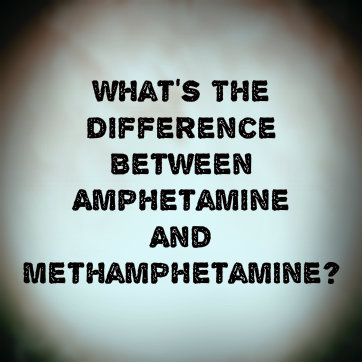 Amphetamine has a variety of medical uses and drugs containing amphetamines have been prescribed by physicians for a variety of conditions. For example, because amphetamines are powerful psychostimulants and increase metabolism, they have often been incorporated into prescription weight loss aids. Amphetamines also have the ability to increase focus and heighten mental clarity and thus have been prescribed to treat those struggling with attention-deficit hyperactivity disorder (ADHD) or to help soldiers stay awake during long stints in the field.
Amphetamine has a variety of medical uses and drugs containing amphetamines have been prescribed by physicians for a variety of conditions. For example, because amphetamines are powerful psychostimulants and increase metabolism, they have often been incorporated into prescription weight loss aids. Amphetamines also have the ability to increase focus and heighten mental clarity and thus have been prescribed to treat those struggling with attention-deficit hyperactivity disorder (ADHD) or to help soldiers stay awake during long stints in the field.
Methamphetamines
Methamphetamine is more commonly associated with illegal, recreational use and is never prescribed medically. Methamphetamine is amphetamine double methylated (amphetamine is methylated once). The science behind this may be complicated for the layperson, but the important thing to understand is that methamphetamine, because it has been methylated twice, is significantly faster acting, more potent, and more addictive, and thus quite a bit more dangerous.
The result of both is euphoria because of increased release of norepinephrine and dopamine in the brain. This release of pleasure chemicals stimulates the brain’s reward center, enticing the user to not only continue use, but, as tolerance develops, to crave ever increasing levels of the drug.
The effects of use are similar in both amphetamines and methamphetamines including increased pulse, hyperactivity, dizziness, and insomnia, but the effects are more potent with methamphetamines. When taken exactly as prescribed and under the careful monitoring of a physician, amphetamine usage can be safe. The same cannot be said of methamphetamines, for which experimentation can carry grave results.
Abuse Of Amphetamine And Methamphetamine
Though amphetamines may boast a variety of medical uses, the prescription drugs containing amphetamines still carry risk as well as unfavorable side effects. These drugs are highly addictive and carry significant potential for abuse.
While they have unique and distinct effects on the body, in both cases the body develops tolerance rapidly and more and more of the drug is required to achieve the desired results. Even if an individual does desire to stop taking the amphetamine-based prescription or to stop using meth, the physical dependence can throw the individual into severe withdrawal.
It is recommended that those intending to cease use of amphetamines or methamphetamines do so under the care and supervision of a doctor or with the assistance of a drug rehab program and related therapy.
So amphetamine vs. methamphetamine isn’t really the issue. Both drugs are potent and dangerous with the potential for abuse and addiction. While amphetamine may be used safely under the supervision of a physician, it still carries risk and should be taken with caution and care.
If You Or Someone You Know Is Struggling With An Addiction
Call Us Now – We Are Available 24/7
05 Jun 2014
How Can Marijuana Use Lead To Heart Disease?
The use of cannabis (marijuana, hashish and hashish oil) is linked to a range of potential health problems, including diagnosable abuse and/or addiction and increased odds of experiencing some of the psychosis-related symptoms associated with schizophrenia and certain other severe mental illnesses.
In a study published in April 2014 in the Journal of the American Heart Association, a team of French researchers investigated another possible consequence of cannabis use: dysfunction in the cardiovascular (heart and blood vessel) system. These researchers concluded that young adult cannabis users, in particular, put themselves at increased risk for potentially life-threatening cardiovascular problems.
Marijuana Use Stats
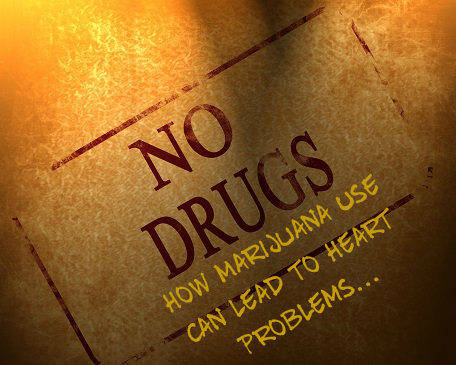 Cannabis use (particularly, marijuana use) is a relatively common form of recreational substance intake among U.S. adults and teenagers, according to figures compiled by the federal Substance Abuse and Mental Health Services Administration. In 2012 (the last year with fully available statistics), almost 19 million Americans over the age of 11 used marijuana in a given month; this number is the equivalent of more than 7 percent of the teen and adult population.
Cannabis use (particularly, marijuana use) is a relatively common form of recreational substance intake among U.S. adults and teenagers, according to figures compiled by the federal Substance Abuse and Mental Health Services Administration. In 2012 (the last year with fully available statistics), almost 19 million Americans over the age of 11 used marijuana in a given month; this number is the equivalent of more than 7 percent of the teen and adult population.
The highest rates of intake for marijuana and all other illegal or misused substances occur in teenagers and young adults between the ages of 16 and 34. Within this fairly broad age range, peak rates of use occur among individuals in their late teens or early 20s. Intake rates are lowest among very young adolescents and adults age 60 or older. Throughout the U.S., only alcohol and nicotine outrank marijuana as popular substances of abuse.
Cardiovascular Risks Associated With Marijuana Use
One of the most serious cardiovascular problems is acute coronary syndrome, a term that doctors use collectively to describe any condition that produces a rapid decrease in blood supplied to the tissues that make up the heart muscle. Well-known conditions that meet this definition include heart attack (loss of blood flow and tissue death in specific areas of the heart) and cardiac arrest (stoppage of all heart function). Acute coronary syndrome also includes a form of unpredictable chest pain called unstable angina.
In the study published in the Journal of the American Heart Association, researchers from four French institutions used information from an ongoing project called the French Addictovigilance Network to assess the cardiovascular risks faced by people who use marijuana or other forms of cannabis.
In France, this network acts as a national reporting system for all people seriously impacted by any type of substance abuse or substance addiction. The researchers looked at data gathered from 2006 to 2010. All told, 1,979 reports of serious cannabis-related harm were registered with the Addictovigilance Network during this timeframe.
The researchers found that cardiovascular problems accounted for just 1.8 percent of all cannabis-related harm. However, they also found that many of the reported cardiovascular problems were severe or potentially lethal in nature. For example, over half of the affected individuals suffered from acute coronary syndrome.
Other reported problems included complications related to the function of blood vessels located in the upper or lower limbs, as well as complications related to the function of blood vessels inside the brain. Altogether, fully 25.6 percent of the cannabis users impacted by serious cardiovascular issues died as a result of their condition.
Does Marijuana’s Negative Cardiovascular Effects Have A Greater Impact In Men?
The authors of the study published in the Journal of the American Heart Association found that the vast majority (85.7 percent) of the cannabis users affected by serious cardiovascular problems were male. On average, affected individuals of both genders were just over the age of 34. The study’s authors specifically note that young adults who use cannabis may have increased risks for potentially fatal cardiovascular issues.
In line with this conclusion, they call for wide distribution of information regarding the link between cannabis use and serious heart- and blood vessel-related harm. In addition, they call upon doctors to consider cannabis intake as a possible source or contributing factor for any cardiovascular problems found in young adult patients.
Find Out If Marijuana Is Really Dangerous Now!
Call Us Immediately If You Believe You Or Someone You Know Is Abusing Drugs Or Alcohol!
Millions of cigarette smokers across the U.S. are addicted to nicotine, a natural ingredient in tobacco capable of producing harmful, long-term changes in brain chemistry just like a range of other legal and illegal substances of abuse. In most cases, people who attempt to quit smoking do so without the help of an addiction specialist or any other health professional prepared to deal with nicotine addiction. In a study published in March 2014 in the journal Addiction, a team of British and Dutch researchers assessed the likelihood that smokers addicted to nicotine will successfully quit using cigarettes without professional help.
The Basics Of Nicotine Addiction
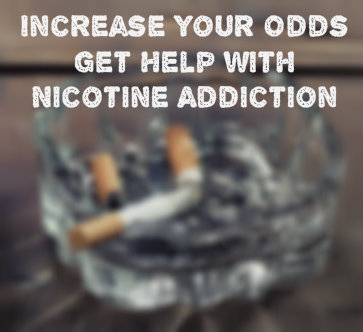 Nicotine addiction is related to a nicotine-induced chemical imbalance in the area of the brain responsible for producing pleasurable responses to various activities. This imbalance activates the pleasure center and gives a smoker an incentive to introduce nicotine into the brain again and again over time. This incentive is heightened by the fact that any single episode of nicotine exposure only briefly produces its pleasurable effects. Over 40 million American adults smoke cigarettes; since most habitual smokers are nicotine addicts, nicotine addiction constitutes the most widespread form of substance addiction in the U.S. More than two-thirds of the people who smoke cigarettes want to quit, according to figures compiled by the federal Centers for Disease Control and Prevention.
Nicotine addiction is related to a nicotine-induced chemical imbalance in the area of the brain responsible for producing pleasurable responses to various activities. This imbalance activates the pleasure center and gives a smoker an incentive to introduce nicotine into the brain again and again over time. This incentive is heightened by the fact that any single episode of nicotine exposure only briefly produces its pleasurable effects. Over 40 million American adults smoke cigarettes; since most habitual smokers are nicotine addicts, nicotine addiction constitutes the most widespread form of substance addiction in the U.S. More than two-thirds of the people who smoke cigarettes want to quit, according to figures compiled by the federal Centers for Disease Control and Prevention.
Smoking Cessation Techniques
The main smoking cessation technique available to a cigarette user who does not seek professional assistance is non-prescription nicotine replacement therapy. This approach relies on the use of over-the-counter nicotine-containing gum, lozenges or patches to gradually reduce an individual’s dependence on nicotine and help him or her avoid the unpleasant symptoms of nicotine withdrawal (which commonly act as a strong deterrent to smoking cessation efforts). Techniques used under the guidance of an addiction specialist or some other form of health professional include prescription nicotine replacement therapy (nasal sprays, inhalers or patches) and prescription nicotine-free medications such as varenicline (Chantix) or buproprion (Zyban), as well as forms of counseling that include short training and motivational sessions called brief interventions, longer group or individualized counseling sessions, remote counseling sessions that rely on phone or Internet technology and a form of in-person practical training called behavioral therapy. As a rule, a combination of professionally administered medication and counseling produces results that are superior to an all-medication or an all-counseling approach.
Chances Of Quitting Success
In the study published in Addiction, researchers from University College London and the Maastricht University Medical Centre used information gathered from a large-scale survey project called the Smoking Toolkit Study to compare the chances of smoking cessation success among people who make their own efforts to the chances of success among people who seek professional help. All told, data was collected from 10,335 smoking adults in England who had tried to stop using cigarettes one time or more in the year prior to the survey. The researchers broke these individuals down into four groups: people who received both professionally administered counseling and medication while trying to quit, people who only received professionally administered medication while trying to quit, people who tried to quit on their own with non-prescription nicotine replacement products and people who tried to quit on their own without using non-prescription nicotine replacement.
The researchers concluded that, compared to smokers who try to quit on their own without nicotine replacement products, smokers who try to quit while receiving professionally administered counseling and medication successfully stop smoking more than three times as often. Smokers who try to quit while only receiving prescription medication successfully stop smoking over 1.5 times more often than smokers who quit on their own without nicotine replacement products. Smokers who quit while only using non-prescription nicotine replacement successfully stop smoking about 0.96 times more often than those individuals who try to stop without any form of non-prescription medication or professional help.
The authors of the study published in Addiction note that, while there is some difference in the rates of smoking cessation success for people who only use over-the-counter nicotine replacement and people who use no assistance at all, the results in these two groups are close enough to qualify as “similar.” In contrast, people who receive a combination of counseling and prescription medication or just prescription medication clearly have improved odds of successfully quitting smoking.
03 Apr 2014
Why Is Substance Abuse Rising Among Seniors?
Drug abuse is not only for the young. Statistics indicate that seniors are using and abusing drugs at an ever increasing rate. It’s a problem that not many are willing to talk about openly, but the risks to our older loved ones are great and it is an important issue to address. The biggest problems when it comes to substance abuse in the elderly are alcohol and prescription drugs. If you care for an older friend or family member, be aware of the possibility of substance abuse and know the signs so you can step in and help.
Why Are Seniors Abusing Drugs And Alcohol?
 There are several reasons older Americans are abusing substances in growing numbers. One explanation is that the population of seniors has been growing as the baby boomer generation ages. That population age shift, however, is not the only issue. Socializing often drops off with retirement and aging. With loneliness may come self-medication with alcohol or readily available prescription medications. Another possible issue is mental health. Many seniors either do not recognize the signs of mental health problems in themselves, or they are embarrassed to seek treatment and turn to self-medication instead of getting professional help.
There are several reasons older Americans are abusing substances in growing numbers. One explanation is that the population of seniors has been growing as the baby boomer generation ages. That population age shift, however, is not the only issue. Socializing often drops off with retirement and aging. With loneliness may come self-medication with alcohol or readily available prescription medications. Another possible issue is mental health. Many seniors either do not recognize the signs of mental health problems in themselves, or they are embarrassed to seek treatment and turn to self-medication instead of getting professional help.
What Are The Dangers Of Senior Substance Abuse?
Substance abuse is risky and dangerous for anyone at any age, but the elderly are particularly vulnerable to the consequences. Many seniors have several prescriptions for medical reasons. Mixing these drugs with each other and with alcohol can have serious and even fatal outcomes. Between 20 percent and 30 percent of adults over the age of 75 have a problem with drinking, which means that the possibility for harmful interactions is great.
Abusing drugs and alcohol, or both, causes dangerous side effects for seniors. These include sleeping problems, delirium and cognitive issues, difficulty balancing and an increased number of falls, and depression and anxiety.
How To Recognizing The Signs Of Substance Abuse
If you think it is impossible that your older loved one is abusing drugs, take a look at the facts. According to Johns Hopkins Medical School, 12 percent to 15 percent of older adults who seek medical help for any reason are abusing prescription drugs. While some also abuse illegal drugs, prescriptions are the real issue. As with people in other age groups, seniors may underestimate the harm that these legal drugs can cause. Opioid painkillers and benzodiazepines are among the most frequently abused. Make sure you know the signs of abuse so you can recognize them in your older loved one.
The most important thing to look for is change. Any kind of change in regular habits or behaviors may indicate a drug abuse problem, or a medical problem. In either case, your loved one will need to see a doctor. With drug abuse, you may see changes in sleeping habits and appetite. Look for unexplained weight loss or gain. An increased number of falls or injuries can indicate inebriation. Changes in mood, such as irritability, agitation or confusion often accompany drug abuse. Also be suspicious if your loved one is seeing multiple doctors or filling prescriptions in several different pharmacies.
Seniors substance abuse is a growing problem and one that could have serious individual and public health implications. The consequences of abusing drugs and alcohol become more serious as we age. Take good care of your older loved ones and always have your eyes open to the signs of abuse. Intervening is important and could prevent harm and even save a life.
Methamphetamine is a highly addictive stimulant drug of abuse that produces substantially more profound effects on normal brain chemistry than cocaine. Repeated, long-term (i.e., chronic) users of this drug have very strong chances of developing diagnosable issues with drug abuse and drug addiction. In March 2014, researchers from the RAND Corporation presented the White House Office of National Drug Control Policy with a detailed report that, among other things, estimates the number of Americans affected by chronic methamphetamine use from 2000 to 2010. This report also breaks down chronic users of the drug into three levels of habitual intake.
What Constitutes A Meth User?
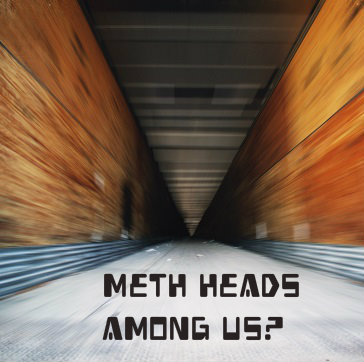 Each year, federal researchers from the Substance Abuse and Mental Health Services Administration use a project called the National Survey on Drug Use and Health to estimate the overall prevalence of methamphetamine use among American teenagers and adults. Figures released in late 2013 for the 2012 version of this survey indicate that 0.2 percent of the total population age 12 or older used the drug in an average or representative month. In raw numbers, this equates to about 440,000 people. In addition, approximately 0.4 percent of the teen and adult population used methamphetamine at some point during the entire survey year. This percentage equates to roughly 1.2 million people. Another project funded by the National Institute on Drug Abuse, called Monitoring the Future, tracks methamphetamine use among all 8th, 10th and 12th graders. All told, about 1 percent of students enrolled in these three grades used the drug at least one time in 2012.
Each year, federal researchers from the Substance Abuse and Mental Health Services Administration use a project called the National Survey on Drug Use and Health to estimate the overall prevalence of methamphetamine use among American teenagers and adults. Figures released in late 2013 for the 2012 version of this survey indicate that 0.2 percent of the total population age 12 or older used the drug in an average or representative month. In raw numbers, this equates to about 440,000 people. In addition, approximately 0.4 percent of the teen and adult population used methamphetamine at some point during the entire survey year. This percentage equates to roughly 1.2 million people. Another project funded by the National Institute on Drug Abuse, called Monitoring the Future, tracks methamphetamine use among all 8th, 10th and 12th graders. All told, about 1 percent of students enrolled in these three grades used the drug at least one time in 2012.
The Levels Of Chronic Meth Use
All chronic drug users repeatedly take a given substance over time. However, the actual frequency of intake between different chronic users can vary quite substantially. For instance, “low level” chronic users may regularly take a drug about four to 10 days a month. “Moderate- to high-level” chronic users may regularly take a drug about 11 to 20 days a month. The most extreme level of chronic use involves drug intake on a minimum of 21 days a month. Chronic drug use and the onset of diagnosable abuse and addiction typically go hand in hand. Compared to other habitual users, heavy chronic users commonly experience particularly intense forms of these problems. In the U.S., diagnosable cases of methamphetamine abuse and addiction fall under the heading of a larger condition called stimulant use disorder, which also encompasses abuse and addiction associated with the use of cocaine, amphetamine and other stimulant substances.
How Many Chronic Methamphetamine Users Are There?
In the report presented to the White House Office of National Drug Control Policy, the research team from the RAND Corporation used data gathered from several well-regarded sources to calculate how many people in the U.S. qualified as chronic methamphetamine users for each year between 2000 and 2010. Among others, these sources included that National Survey on Drug Use and Health and a periodically conducted project called the Arrestee Drug Abuse Monitoring Program, which tracked drug use rates in people who get arrested or otherwise come under the jurisdiction of the criminal justice system. In 2010, the most likely total number of chronic methamphetamine was about 1.6 million. The actual number of affected individuals may have been as low as 700,000 or as high as 2.7 million. For a number of reasons (including the relatively high rate of drug use among incarcerated individuals), the figures from the RAND report are substantially higher than the estimates produced by the National Survey on Drug Use and Health.
Roughly 600,000 of the people classified as chronic methamphetamine users in 2010 took the drug on four to 10 separate days per month. A slightly smaller number of chronic users (500,000) took the drug on 11 to 20 separate days per month. In addition, about 500,000 chronic methamphetamine users took the drug on 21 or more separate days per month.
The authors of the RAND Corporation report note that it’s quite difficult to accurately determine how many people in the U.S. have been involved in chronic methamphetamine use since the beginning of the 2000s. These difficulties stem largely from changes in the programs used to gather information on methamphetamine use. For example, methods employed by the National Survey on Drug Use and Health to calculate this use were changed significantly in 2007. In addition, there is only incomplete information available from the Arrestee Drug Abuse Monitoring Program (which also completely lost its federal funding in 2012).
Read About How Bath Salts Are 10 Times More Addictive Than Meth
29 Jan 2014
Is PCP Use Dangerously Increasing?
PCP is a well-known nickname for phencyclidine, a powerful tranquilizer that, among its other effects, interferes with the ability to remain consciously connected to the self or to one’s surroundings. Since the 1960s, the tranquilizer has been purposefully or unintentionally used as a recreational drug by a small but significant number of teenagers and adults. For a long time, PCP seemed to drop in popularity among drug users. However, according to the results of a report released in November 2013 by the federal Substance Abuse and Mental Health Services Administration (SAMHSA), use of the use of PCP may be on the rise.
PCP’s Effects
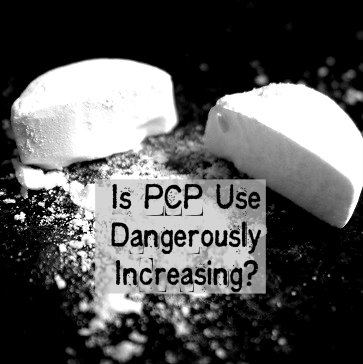 PCP produces its effects as a tranquilizer by causing dissociation, a detached mental state featuring a diminished capacity to take in the sensory information that human beings rely on to stay oriented to reality and maintain self-awareness. The drug can also produce a number of other immediate or short-term effects, including hallucinations, delusional behavior, paranoia, unusual aggression or agitation, euphoria, panic, a lack of normal mental or physical responsiveness, speaking difficulties, muscle impairment, changes in breathing and heart rates, obsessive thought patterns and depression.
PCP produces its effects as a tranquilizer by causing dissociation, a detached mental state featuring a diminished capacity to take in the sensory information that human beings rely on to stay oriented to reality and maintain self-awareness. The drug can also produce a number of other immediate or short-term effects, including hallucinations, delusional behavior, paranoia, unusual aggression or agitation, euphoria, panic, a lack of normal mental or physical responsiveness, speaking difficulties, muscle impairment, changes in breathing and heart rates, obsessive thought patterns and depression.
The specific short-term effects of PCP in any given individual depend largely on the amount of the drug he or she consumes. People who take doses well over 10 mg can experience a phencyclidine-related overdose that leads to seizures, coma or loss of life. Potential long-term effects of habitual PCP use include chronic memory problems, chronic psychosis and persistent depression or anxiety.
Tracking PCP Use
In the U.S., the federal government tracks the use of PCP and other commonly abused substances in a number of ways. For instance, the National Institute on Drug Abuse tracks usage rates among teenagers through an annual project called Monitoring the Future, which uses statistics gathered from 130 strategically chosen high schools to estimate larger national substance intake trends. The Substance Abuse and Mental Health Services Administration tracks drug use in the entire U.S. population by gathering information on drug-related incidents from emergency rooms at hospitals across the country, as well as information on drug-related deaths submitted by both coroners and medical examiners after they conduct autopsies. The system used to coordinate this information and issue important findings is called the Drug Abuse Warning Network (DAWN).
Evidence For A Rise In PCP Use – Who’s Using?
In the report issued by SAMHSA, officials from the Drug Awareness Warning Network tracked the national trajectory of PCP-related emergency room visits between 2005 and 2011. In 2005, 14,825 incidents were reported by emergency room personnel. By the close of 2011, this figure had risen to 75,538, or slightly more than five times the 2005 total. Much of this increase can be attributed to a serious spike in PCP-related episodes in the two years between 2009 and 2011.
The DAWN report contains a wealth of detailed information on exactly who is being impacted by the rise in PCP-related emergency room episodes. Among preteens and teenagers between the ages of 12 and 17, emergency room episodes increased by 184 percent between 2005 and 2011. Among older teenagers and young adults between the ages of 18 and 24, episodes increased by 289 percent.
However, the highest increases occurred among adults between the ages of 25 and 34; people in this age group experienced a 518 percent spike in PCP-related emergency room visits between 2005 and 2011. Adults between the ages of 35 and 44 experienced a 300 percent increase. No accurate figures were available for adults over the age of 44. In addition, the authors of the DAWN report concluded that, depending on the age group in question, boys and men are anywhere from three to 10 times more likely than girls and women to experience a PCP-related emergency room episode.
PCP Risk Knowledge
No one knows for sure if the DAWN figures, which only highlight one potential outcome of PCP use, point toward an actual rise in intake of the drug across the U.S. However, DAWN findings typically have significant value in the overall effort to track drug use trends. The authors of the report believe that any spike in PCP use may stem from lack of familiarity with the drug among younger users, as well as a subsequent lack of understanding about the risks associated with PCP intake. They also believe that future PCP-related public health campaigns may have an improved effect if they’re especially targeted at young adults in their late 20s and early 30s.
Read More About How As The Drug War Escalates, Drugs Get Stronger And Cheaper


